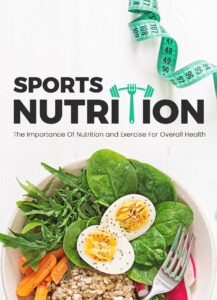Guide to Creating a Balanced Diet Plan

Before diving in, please note: This post is for informational purposes only. If you’d like to know more about how we approach topics, feel free to check out our friendly Disclaimer Page.
Hey there, amazing readers! 🖐️ Just a quick note: yes, we know there are a lot of ads here. Trust us, we get it—it’s not the prettiest look, but they help us keep this blog alive and kicking. Those pesky little ads cover the costs of all the behind-the-scenes magic, from hosting and tech stuff to creating content we hope you’ll love.
We’re committed to delivering quality posts, and your support (even just sticking around despite the ads) means everything to us. So, bear with us, and thanks for helping us keep the good vibes rolling. Now, on to the fun stuff! 😉
TRANSLATE BUTTON AT THE END OF THE ARTICLE
A Quick Overview
Creating a balanced diet plan might seem tricky at first, but I promise it’s not as complicated as it sounds.
Like many things in life, it’s all about finding the right balance that works for you.
A balanced diet gives your body the nutrients it needs to function optimally and can leave you feeling more energetic and even happier.
If you’re ready to dive into the world of nutrition, I’m here to guide you through it step by step.
Understanding the Basics of a Balanced Diet Plan
At its core, a balanced diet includes a variety of foods in the right proportions.
Think of it like assembling a jigsaw puzzle.
Each piece—the proteins, fats, carbohydrates, vitamins, and minerals—fits into your overall health picture.
A balanced diet is not about restriction; it’s more about moderation and variety.
One important aspect to consider is that our bodies require different nutrients at different stages of life.
For example, children need more energy-dense foods for growth, while older adults may need fewer calories but a higher intake of certain vitamins and minerals.
So, how do you know if you are eating a balanced diet?
Start by looking at your plate.
Ideally, half of it should be filled with fruits and vegetables, while the other half consists of lean protein and whole grains.
This visual representation can help you create meals that nourish without overwhelming.
Remember, a balanced diet doesn’t mean you can’t indulge!
It’s about finding a happy medium.
If you love pizza, try adding a side of salad or swapping out the crust for a whole-grain option.
Balance doesn’t eliminate your favorite foods; it enhances them!
The Importance of Nutrients for Your Well-Being
Nutrients are like tiny superheroes for your body.
Each nutrient fulfills a special role that contributes to your overall health.
Let’s break them down:
Carbohydrates: They’re your body’s main energy source.
Think of them as fuel for your engine.
But not all carbs are created equal; opt for whole grains over refined sugars for a steady energy release.
Proteins: These are the building blocks that help repair tissues and build muscle.
Whether you’re a meat lover or a vegetarian, there are plenty of protein sources like beans, nuts, and dairy products.
Fats: Yes, you heard it!
Healthy fats are essential for brain health and hormone production.
Avocados, nuts, and olive oil are some great sources.
Discover "SUPERFOODS: The Key to Health and Balance🥗" 🌿🌺
Vitamins & Minerals: These micronutrients play pivotal roles in processes like bone health, immune function, and energy production.
A diverse diet filled with colorful fruits and veggies can help you meet these needs.
Neglecting any nutrient can lead to deficiencies and health issues.
So, rather than counting calories obsessively, focus on nutrient density.
Eating a variety of foods will help you get the right mix of nutrients.
Exploring the Different Food Groups You Need
A well-rounded diet includes five main food groups: fruits, vegetables, grains, protein, and dairy.
Here’s how they fit together:
Fruits: They are packed with vitamins, minerals, and fiber.
Think berries, apples, oranges—each offers a unique health benefit.
Vegetables: The more colorful, the better!
Dark leafy greens are great for calcium and iron, while bright peppers are rich in vitamin C.
Grains: Emphasize whole grains like brown rice, quinoa, and whole wheat bread.
They provide energy and fiber to keep you full longer.
Protein: Include a variety of sources—animal-based like chicken, fish, and plant-based like lentils and tofu.
This diversity ensures you get all essential amino acids.
Dairy or Alternatives: This group offers calcium for strong bones.
If you’re lactose intolerant, try almond, soy, or oat milk fortified with calcium and vitamin D.
When shopping, aim for the perimeter of the grocery store where fresh foods typically reside, and avoid the inner aisles packed with processed items.
Each food group plays its part in providing essential nutrients, so don’t skimp on any!
How to Calculate Your Daily Caloric Needs
Understanding how many calories you need can feel like trying to solve a mystery.
But it’s simpler than it seems!
Your caloric needs depend on various factors like age, sex, weight, height, and activity level.
A great starting point is the Harris-Benedict equation, which calculates your Basal Metabolic Rate (BMR).
Here’s a simplified way to estimate your daily needs:
Calculate BMR:
- For men: BMR = 66 + (6.23 x weight in pounds) + (12.7 x height in inches) – (6.8 x age in years)
For women: BMR = 655 + (4.35 x weight in pounds) + (4.7 x height in inches) – (4.7 x age in years)
Multiply BMR by an activity factor:
Discover "Sports Nutrition: The Importance of Nutrition and Exercise for Overall Health 🥗🏋️"

- Sedentary (little or no exercise): BMR x 1.2
Lightly active (light exercise/sports 1-3 days/week): BMR x 1.375
Moderately active (moderate exercise/sports 3-5 days/week): BMR x 1.55
Very active (hard exercise/sports 6-7 days a week): BMR x 1.725
Super active (very hard exercise & a physical job): BMR x 1.9
Once you have this number, you can adjust your caloric intake based on your goals—whether it’s weight loss, maintenance, or gain.
Crafting Your Plate: Portion Sizes Made Easy
Portion control can be a game changer.
But how do you know how much to eat?
A handy approach is the “plate method.” Here’s how it works:
Fill half your plate with fruits and vegetables.
This will provide essential vitamins and keep calories in check.
One-quarter of your plate should be lean proteins.
That could be grilled chicken, tofu, or fish.
The final quarter is for whole grains or starchy vegetables.
Think brown rice, quinoa, or sweet potatoes.
Using your hand can help too!
For instance, a serving of protein should be about the size of your palm, while a serving of carbohydrates can be the size of a fist.
Visual cues can simplify portion sizes without needing a food scale.
Plus, if you’re ever in doubt, starting with smaller servings can help avoid overwhelming yourself—and you can always take seconds if you’re still hungry!
Incorporating Fruits and Vegetables Into Your Meals
Getting your daily dose of fruits and veggies can be a joyful exploration.
Try to aim for a variety of colors, as each color often signifies different health benefits.
Here are some fun ways to incorporate them into your meals:
Smoothies: Blend spinach with bananas and berries for a refreshing breakfast.
Salads: Toss together your favorite greens, nuts, and a protein for a filling lunch.
Snacks: Keep cut-up veggies and hummus in the fridge for an easy grab-and-go option.
Soups: A hearty vegetable soup can be a comforting dinner option, loaded with nutrients.
Experiment with new recipes or cooking methods, such as grilling or roasting, to discover flavors that excite your palate.
You might even find a new favorite dish!
Exploring Healthy Protein Sources for Your Diet
Protein is essential, but it doesn’t have to come from meat alone.
Here are some healthy protein sources you might want to consider:
Legumes: Beans, lentils, and chickpeas are not only protein-rich but also high in fiber.
Nuts and seeds: Almonds, walnuts, chia seeds, and flaxseeds pack a protein punch along with healthy fats.
Dairy: Greek yogurt is a great option, loaded with protein and probiotics.
Fish: Fatty fish like salmon are rich in omega-3 fatty acids and provide high-quality protein.
Mixing up your protein sources can keep meals interesting and expose you to different nutrients.
Maybe throw together a chickpea salad one day and try a salmon stir-fry the next!
Fats Are Your Friends: Choosing the Right Kind
Yes, I said it—fats can actually be your friends!
Not all fats are created equal, so it’s essential to choose wisely.
Unsaturated fats: Found in olive oil, avocados, and nuts, these fats are heart-healthy and may reduce your risk for heart disease.
Saturated fats: These should be consumed in moderation.
They’re often found in red meat and full-fat dairy products.
Trans fats: These are the enemies you want to avoid at all costs.
Found in many processed foods, they can raise bad cholesterol.
Embrace healthy fats!
A drizzle of olive oil on your salad or a few slices of avocado on toast can elevate your meals while nourishing your body.
Remember, moderation is key—too much of a good thing can lead to unwanted calories.
The Role of Whole Grains in a Balanced Diet
Whole grains deserve a special shoutout!
They contain more nutrients than their refined counterparts.
Consider these benefits of incorporating whole grains into your diet:
Fiber: Whole grains are rich in fiber, which promotes healthy digestion and can help manage weight.
Nutrients: They provide essential vitamins like B vitamins and minerals like iron and magnesium.
You can easily swap white bread or pasta for whole grain options.
Brown rice, quinoa, bulgur, and barley are excellent choices.
Experiment with different grains in your cooking; they can add unique flavors and textures to your meals!
Staying Hydrated: The Importance of Water Intake
Water is often overlooked, but it’s crucial for overall health.
Staying hydrated helps with digestion, skin health, and even energy levels.
So, how much water do we need?
A common recommendation is to drink eight 8-ounce glasses of water a day, but it can vary based on activity level, climate, and personal health.
A good tip is to carry a reusable water bottle—this makes it easier to track your intake throughout the day.
If plain water feels boring, try infusing it with fruits, herbs, or vegetables.
Cucumber and mint or lemon and ginger can transform water into a refreshing treat.
Meal Planning Tips for a Stress-Free Week Ahead
Meal planning can feel like a lifesaver.
It cuts down on daily cooking time and helps you stick to your balanced diet.
Here are some tips that work for me:
Set aside time each week to plan meals.
I usually do this on Sundays while sipping my coffee.
Make a grocery list based on your planned meals.
Stick to it to avoid impulse purchases.
Prep meals in advance.
Chop veggies, cook grains, or even prepare entire dishes to store in the fridge.
Use batch cooking.
Make double portions and freeze leftovers for quick meals later.
When meals are prepared ahead of time, it reduces the temptation to order takeout or snack mindlessly.
Plus, it’s fun to experiment with new recipes!
Building Healthy Habits: Sticking to Your Plan!
Creating a balanced diet plan is just the start; the real challenge is sticking with it.
Here’s how to build lasting habits:
Start small: Change a couple of meals at a time instead of overhauling your entire diet at once.
Keep track: Use an app or journal to monitor what you eat.
This helps you stay accountable.
Find support: Share your goals with friends or family, or join a community that promotes healthy eating.
Be flexible: Life happens!
If you have a burger and fries one night, don’t beat yourself up.
Just get back on track at your next meal.
Being kind to yourself is key.
Remember, it’s a journey, not a race.
Celebrate your progress, no matter how small!
Conclusion
Creating a balanced diet plan doesn’t have to be overwhelming or boring.
By understanding the basics, exploring food groups, and making small, manageable changes, you can craft a plan that nourishes your body and delights your palate.
Keep things light, have fun with your food, and remember that balance is about enjoying life while taking care of yourself.
So grab that colorful plate, and let’s dig into a healthier, happier you!

The Enlightenment Journey is a remarkable collection of writings authored by a distinguished group of experts in the fields of spirituality, new age, and esoteric knowledge.
This anthology features a diverse assembly of well-experienced authors who bring their profound insights and credible perspectives to the forefront.
Each contributor possesses a wealth of knowledge and wisdom, making them authorities in their respective domains.
Together, they offer readers a transformative journey into the realms of spiritual growth, self-discovery, and esoteric enlightenment.
The Enlightenment Journey is a testament to the collective expertise of these luminaries, providing readers with a rich tapestry of ideas and information to illuminate their spiritual path.
Our Diverse Expertise 🌟
While our primary focus is on spirituality and esotericism, we are equally passionate about exploring a wide range of other topics and niches 🌍📚. Our experienced team is dedicated to delivering high-quality, informative content across various subjects ✨.
To ensure we provide the most accurate and valuable insights, we collaborate with trusted experts in their respective domains 🧑🏫👩🏫. This allows us to offer well-rounded perspectives and knowledge to our readers.
Our blog originally focused on spirituality and metaphysics, but we’ve since expanded to cover a wide range of niches. Don’t worry—we continue to publish a lot of articles on spirituality! Frequently visit our blog to explore our diverse content and stay tuned for more insightful reads.





